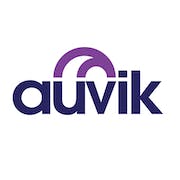Are you looking for the best network mapping software? Our comprehensive buyer's guide has got you covered. Explore key features and considerations to find the perfect fit for your business.
Are you tired of managing your network manually, wasting hours of your day on identifying network issues and resolving them? It's time to upgrade your system with the help of network mapping software. A networkmapper fills the gaps that an ordinary network management and monitoring system has, giving you a 360-degree view of your entire network deployment. The solution enables network administrators to visualize the entire network infrastructure in a single comprehensive map, allowing easier network management and faster issue resolution. With the increased demand for network security and efficient management, investing in a high-quality solution for network mapping has become important. But with a wide range of options available in the market, choosing the right network tool can be overwhelming. That's where this buyer's guide comes in handy. We have done thorough research and analyzed key features and benefits of this program to guide you through selecting the best one for your company.
What is network mapping software?
This is a tool that is designed to help individuals and organizations discover and map all the devices connected to their network. It is essentially a visual representation of all the components in their network and their relationships with each other. This software is becoming increasingly popular in today's world due to the growing complexity of computer networks and the need for better visibility and control.
Some of its common use cases include:
- Network monitoring: By mapping your network architecture, you can easily monitor the status of your network devices, track their performance metrics, and troubleshoot issues as they arise.
- Security auditing: Mapping your network is critical for ensuring security. With network mapping software, you can identify vulnerabilities, identify potential security threats, and take preventative measures to secure your network.
- Planning and expansion: The system is also useful for planning out network expansions or migrating to new systems. With the help of network mapping software, IT teams can streamline the process of adding new devices, networks, or locations.
- Asset management: IT teams can also use it to keep track of all connected devices to their network. This is critical for ensuring the organization is compliant with regulations, managing inventory, and planning out upgrades.
Typically, companies that use network mapping technology span across various industries such as IT, finance, healthcare, education, and government organizations. Any business, regardless of the size, can benefit from this software. As companies' networks become more complex, the solution is essential for making the daily network management tasks more manageable.
Key benefits of utilizing a network mapping solution
Businesses rely heavily on technology to stay ahead in the competitive market. To ensure smooth operations, it's crucial to maintain an organized network infrastructure. By providing users with a visual representation of their network infrastructure, it makes it easier for IT teams to monitor network performance, identify vulnerabilities that could cause downtime or disruptions in services. Here are the main benefits of a network mapping system:
- Efficient network management - It enables businesses to manage their network more efficiently by providing a comprehensive view of their network infrastructure.
- Identifying network vulnerabilities - The tool helps businesses to identify potential network vulnerabilities, resulting in improved network security.
- Improved decision-making - With a mapping platform, businesses can make informed decisions about their network infrastructure, improving their overall performance.
- Time-saving - It saves time by automating network documentation and providing a quick overview of network topology.
- Increased productivity - With the ease of identifying and resolving issues, businesses can improve their productivity, ultimately increasing revenue.
- Cost savings - It can also help businesses save costs associated with network downtime by quickly identifying and resolving issues, minimizing the impact on business operations.
In short, with such benefits, incorporating this technology is a wise investment for businesses looking to stay competitive in the marketplace.
10 key features of network mapping software
Here are 10 common features you can expect to find in a network mapping platform:
1. Discovery and mapping:
Network mapping software allows you to discover and map all devices on your network, including computers, routers, switches, printers, and other network-enabled devices.
2. Performance monitoring:
The program comes with real-time network device monitoring where you can detect bandwidth usage, performance, connectivity issues, and other errors.
3. Network traffic analysis:
Some network mapping software solutions offer the ability to capture and analyze network traffic, giving you greater insight into network behavior and identifying potential problems.
4. Network topology:
Companies are able to create detailed maps of their network topology, including physical and logical connections between devices, to visualize and understand network architecture.
5. Asset management:
It enables you to keep track of your network assets including both hardware and software components.
6. Configuration management:
A wide range of systems offer configuration management to monitor and archive network device configurations, allowing for easier network restoration or device replacement.
7. Reporting:
The tool allows you to generate detailed reports in real-time, including device inventory, performance, and status.
8. Security management:
Mapping software can help you to identify potential vulnerabilities and monitor network security threats such as unauthorized access attempts, DDoS attacks, and other malicious activity.
9. Historical tracking:
A network mapping application allows you to keep track of previous network changes or configurations.
10. Integration with other tools:
Many tools support integration with other networking tools, such as performance monitors, intrusion detection systems, and security event management tools.
Things to consider when purchasing a network mapping tool
When it comes to managing a network, one of the most important tasks is to understand its topology and all of the devices that are connected to it. When considering purchasing a network mapping package, there are several factors that businesses should take into account.
- Firstly, it is important to consider the scale of your network. Smaller networks may not require advanced network mapping features, whereas larger networks will require more robust solutions to manage their complexity.
- Another key factor to consider is the level of automation offered by the system. A user-friendly interface that simplifies the process of network discovery is a valuable feature. An automated scanning and mapping process requires minimal intervention by network admins. Additionally, businesses should consider the software’s capability to track the changes in real-time to provide an up-to-date visual representation of the network.
- The ability of a network solution to interoperate with other network management tools is another factor to consider carefully. Enhanced functionality such as service monitoring and alerting integration add more value to the business so that your IT team can provide better customer support.
- Furthermore, the level of customization to fit your business requirements is crucial when contemplating a network mapping app. The software should allow you to add custom fields to assets which helps to categorize and filter assets as per business-specific requirements. Also, find out if the solution can be integrated with asset management tools to track asset lifecycle management with ease.
- Lastly, it is important to assess the vendor's support and maintenance options. Ensure that the vendor provides an extensive library of documentation for troubleshooting the solution. Similarly, the vendor should be reachable via email, phone or ticketing system, especially when your team encounters tech hitches.
Purchasing network mapping software is an investment that ensures that your IT team gets clearer insights with an automated and simplified assurance that your network topology is always up to date. By considering the factors above, businesses can be confident that they are making an informed decision when choosing the best network mapping software solution to meet their precise needs.
Emerging trends for network mapping technology
This year, there are several emerging trends that are set to shape the landscape of network mapping technology.
Trend #1
Firstly, there is an increasing demand for cloud-based solutions that can be accessed from anywhere, at any time, making it easier for remote teams to collaborate.
Trend #2
Secondly, there is a shift towards more advanced analytics, providing businesses with more insights and enabling them to make more informed decisions. Thirdly, automation is becoming more prevalent, with software providers offering built-in workflows and features that enable users to automate routine network maintenance tasks.
Trend #3
Finally, there is an emphasis on cybersecurity, with network mapping software providing businesses with more advanced security measures to protect against cyber threats. As businesses continue to rely on technology, the importance of network mapping tools will only grow. According to the Ponemon Institute’s State of Cybersecurity Report, 61% of small to medium businesses are concerned about security and how to protect against cyber threats, highlighting the importance of adopting network monitoring tools as essential business investments.
Conclusion
Given the value it provides, a network mapping application is a must-have tool for companies that seek more control, visibility, and security over their networks. By carefully evaluating these factors, you can choose network mapping software that not only meets your current needs but also positions your organization for future growth and technological advancements. This strategic investment will enhance your network management capabilities, leading to improved performance, security, and overall operational efficiency.









